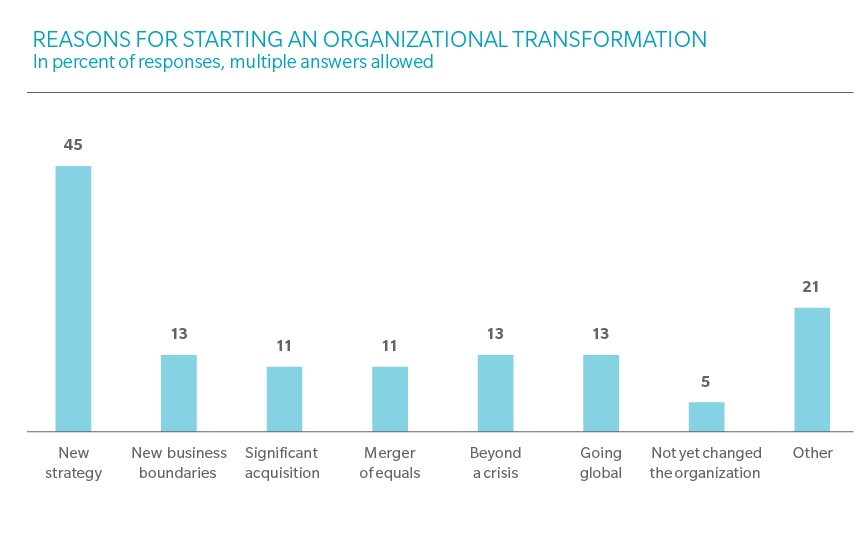A recent Oliver Wyman survey found that two out of three companies undergo a fundamental re-evaluation of their organizations every three years, and nine out of ten reassess their businesses every five years. Successful automotive suppliers recognize this trend. That is why, more than ever, adapting the organizational model is a top item on the executive team agenda. Many suppliers already have adapted their structures in the past few years; however, the challenges continue. For example, there is significant pressure on structural costs. In the past, structural costs rose primarily because suppliers were expanding and taking over more value-added work from automakers. This trend will continue, which will force suppliers to work even harder to manage projected growth. If structural cost is not addressed properly, it will put additional pressure on margins.
For suppliers, developing a more mature organization is one of the keys to ensuring future success. Doing so provides the opportunity for suppliers to align their “internal engine” with the evolution of their corporate culture and strategy. Oliver Wyman research shows that strategy alignment is the No. 1 reason for starting an organizational transformation. But establishing a new strategy is just one catalyst for transformation.
Adapting To Rapid Growth
Suppliers have grown rapidly over the past few years – organically and via mergers and acquisitions. As these companies grow, they develop in several different domains. The trouble is that many are slow to adapt their organizational model to new challenges and business growth. To perform successfully, the organization’s architecture needs to be altered to comply with major business and strategy shifts. When product lines grow and the international customer base expands, structures become more complex. Large, truly global suppliers (revenues of €5 billion and more) often start to develop a business unit structure with individual functions and shared service centers.

Through organizational transformation, suppliers need to preserve or regain performance by addressing four main dimensions: process, decision-making, performance management, and culture. It is crucial to thoroughly describe key processes, especially how tasks need to be performed. If decision-making becomes less straightforward after a period of business growth, then execution will slow. The recommended solution is to clarify roles, assign responsibility, reinforce discipline, and make sure that the right people are part of decision-making committees.
The third component is measuring performance in two key ways: operationally and financially. As the business expands and the number of managed entities grows, control mechanisms become crucial. Finally, a company’s culture also is subject to change. An owner-run company guided by paternalism and entrepreneurial spirit must make major adjustments if it wants to go global. The reinvented company needs a set of guided behaviors and a risk management culture, not to mention a greater sense of rigor and professionalism.
The Benefits
Aligning the entire organization with a clearly defined corporate strategy can help a company conquer new markets while quickly responding to customer trends. Embedding a new “growth DNA” within an organization can significantly drive revenue potential.
The reorganization process typically results in structural improvements, such as streamlined overhead functions (adjusted via benchmarks), optimized management layers, and more agile teams. Project experience shows that such changes typically result in structural cost savings of 8 to 10 percent.
Clear organizational rules and responsibilities facilitate more transparent decision-making and more effective follow-ups throughout the hierarchy, helping to reduce corporate risks. To reduce the overall risk profile, risk-mindful behaviors should be rewarded and unsuitable behaviors corrected.
How To Start The Transformation
Step one: Clearly define a business strategy and outline a “case for change.” Relating to this, parameters should be defined as the basis for measuring the transformation’s success.
Step two: Shortcomings in roles and governance should be highlighted. The efficiency of management layers needs to be analyzed. This step could comprise “listening to the organization” via interviews with key executives.
Step three: Determine blueprints for the future organization. The role of the group and the future decision-making methods should be defined. Resource allocation and the size of blueprint structures need to be considered before assigning staff to specific functional entities.
Step four: Describe roles and key performance indicators for all relevant functions and positions in a pragmatic but concise way. Potential adjustments in performance and controlling systems need to be considered.
Step five: All relevant stakeholders should be involved via a comprehensive change approach that is communicated throughout the organization to ensure sustainable success.
Evolutionary Changes
Most automotive suppliers currently are in good economic shape but their organizational systems face two major challenges: increasingly stringent industry requirements and growing internal complexity. To avoid falling behind, strategic transformation is needed. Ideally, suppliers will use periods of strong economic performance to apply evolutionary changes that reduce the risk of having to make radical changes when faced with a crisis. While change is common across organizations, failure to take action is also common. Experience shows that the crucial factors to achieving a successful transformation are strong leadership, good planning, and disciplined, decisive implementation.







